Analysis of ALPS treated water as third-party
Analysis method
The analysis by JAEA measures the concentration of tritium and other nuclides in the ALPS treated water prior to discharge into the sea.
The analysis is basically performed according to the analysis methods determined by the government (official method), however, there are some nuclides for which the official method has not yet established. In such cases, the analysis is conducted in accordance with the analysis methods that have been verified by experts (peer-reviewed journals) or have been proved by JAEA.
Flow of analysis for each nuclide is as follows.
| Analysis methods for radionuclides other than tritium▼ |
| Method for tritium analysis▼ |
Analysis methods for radionuclides other than tritium
It will be confirmed that radioactive nuclides other than tritium are purified by the ALPS treatment to the concentration below the regulatory standard.
When water contains multiple nuclides like ALPS-treated water, the regulatory standard value considering comprehensively the effect of radioactive materials is applied. Specifically, if the sum of the values obtained by dividing the concentration of each nuclide by the regulatory standard value (regulatory concentration limit) for each nuclide is 1 or less, it is considered to satisfy the discharge standards for radioactive materials. This value is called “sum of the ratios to regulatory concentrations limits”.
For the analysis of radioactive nuclides other than tritium, the nuclides to be analyzed are purified by eliminating impurities that interfere the measurements by the pretreatments in the following flow.
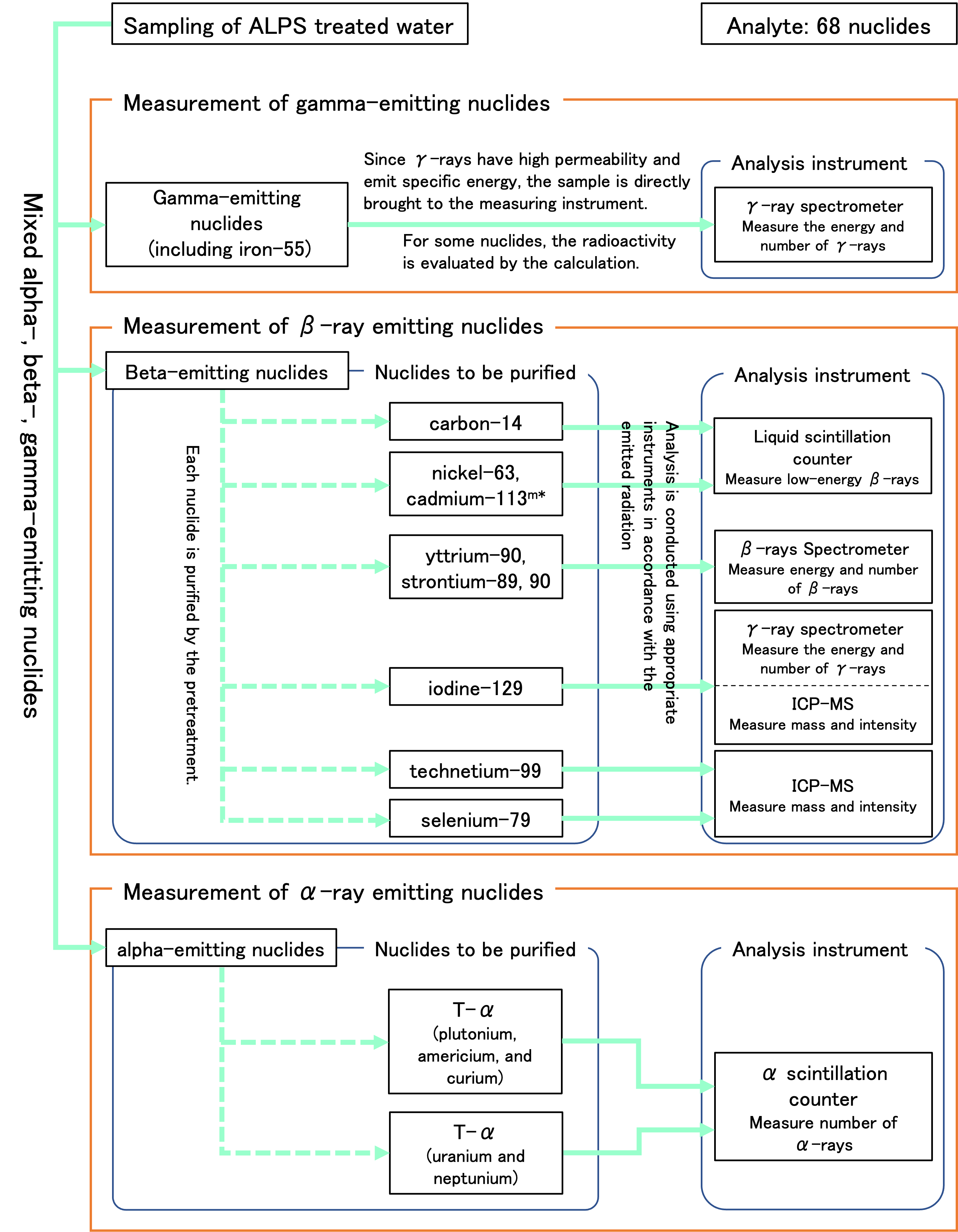
*:“m” means “meta-stable atom”. Generally, when an atom is temporarily excited into the high-energy state (excited state), it loses the energy by immediately emitting radiation. However, there are some cases where an excited atom holds its excited state for relatively long time. Such atom is called meta-stable atom.
Main nuclides to be analyzed
Among the nuclides other than tritium, the analysis steps are shown below, focusing on the nuclides that are often significantly detected (shown in following table).
| Gamma-emitting nuclides | Cobalt-60, Antimony-125, Cesium-137 |
| Beta-emitting nuclides | Carbon-14, Nickel-63, Strontium-90, Technetium-99, Iodine-129 |
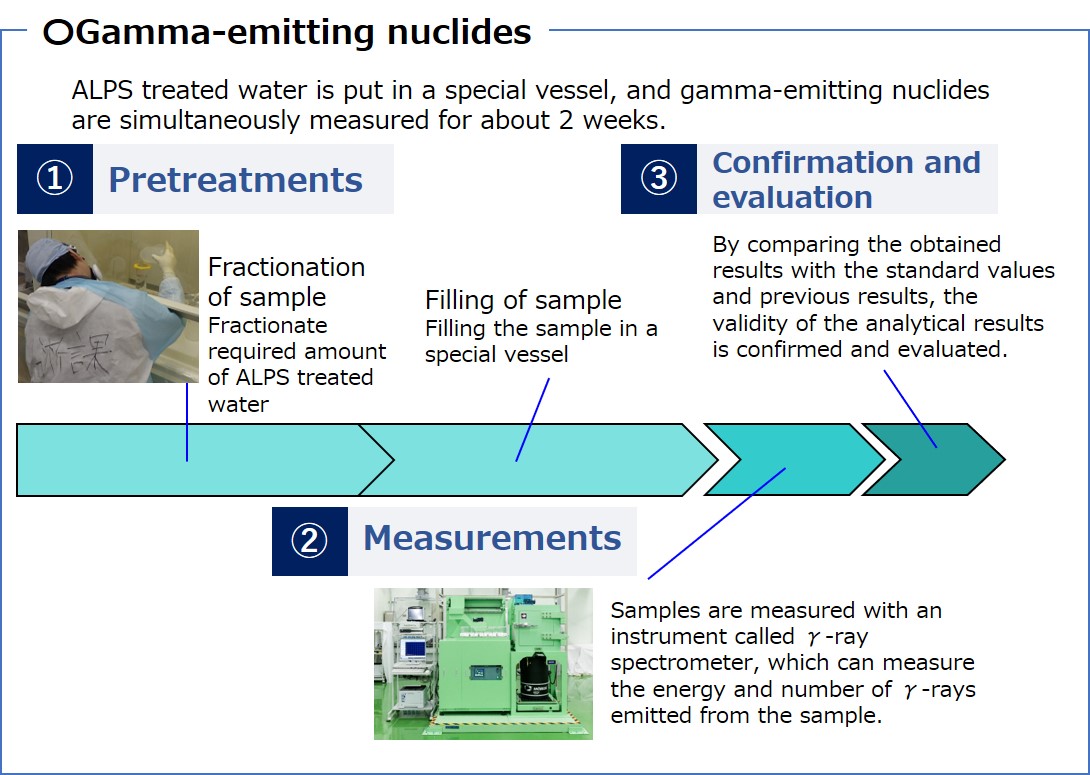
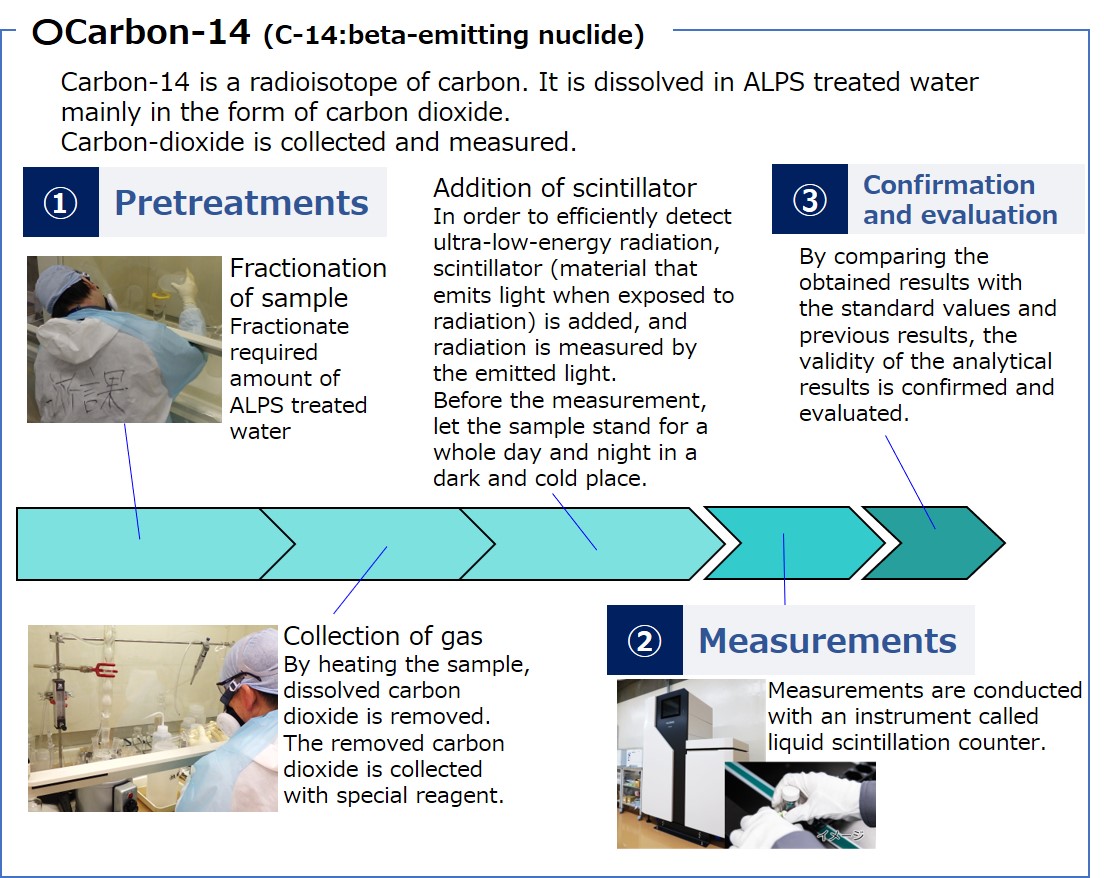
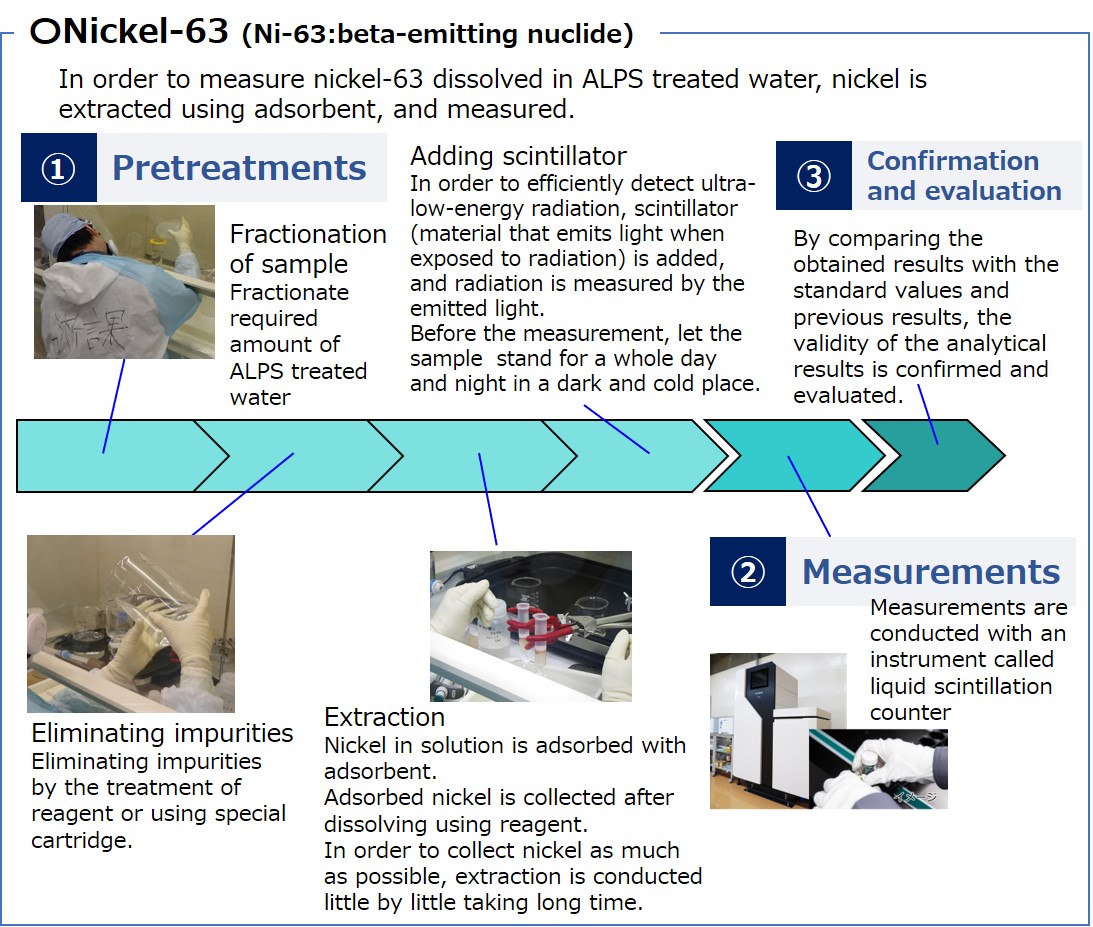

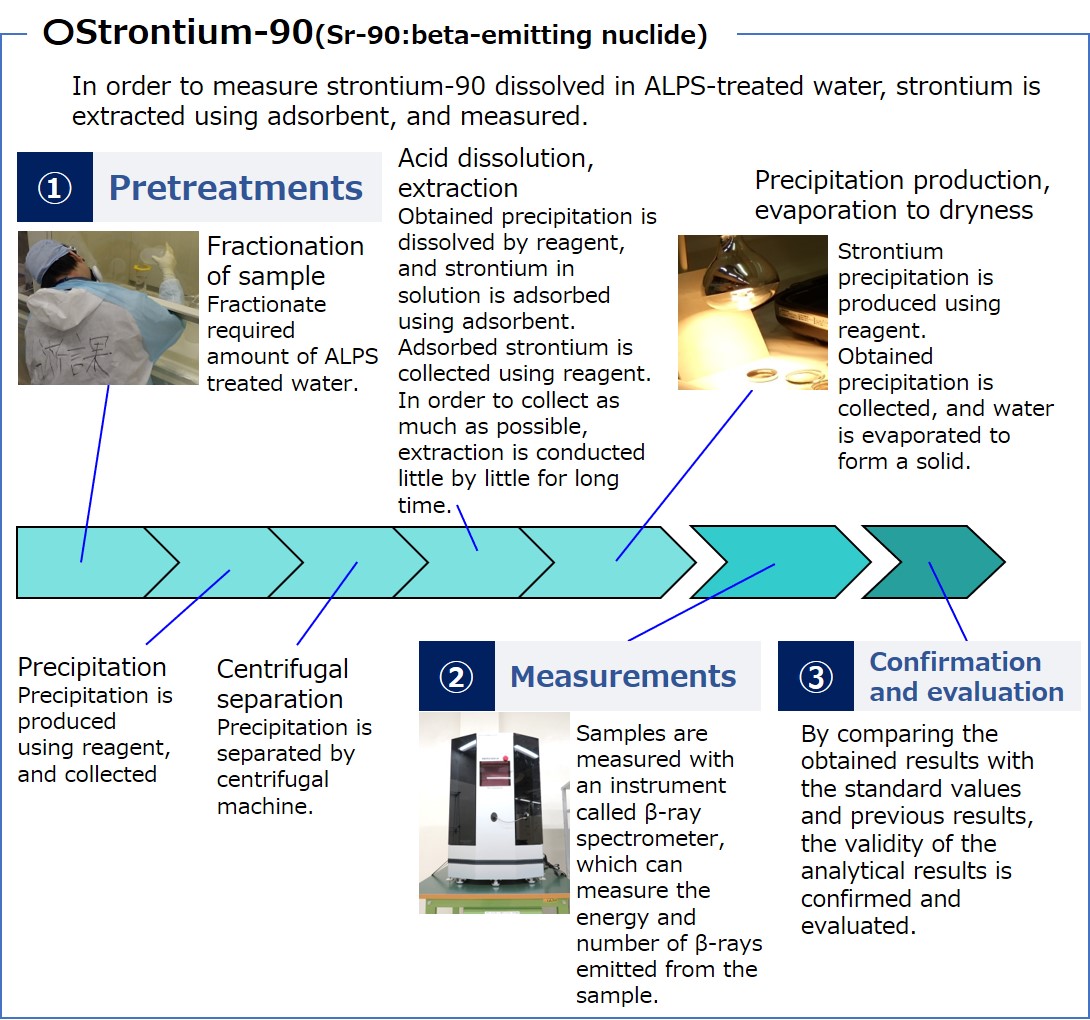
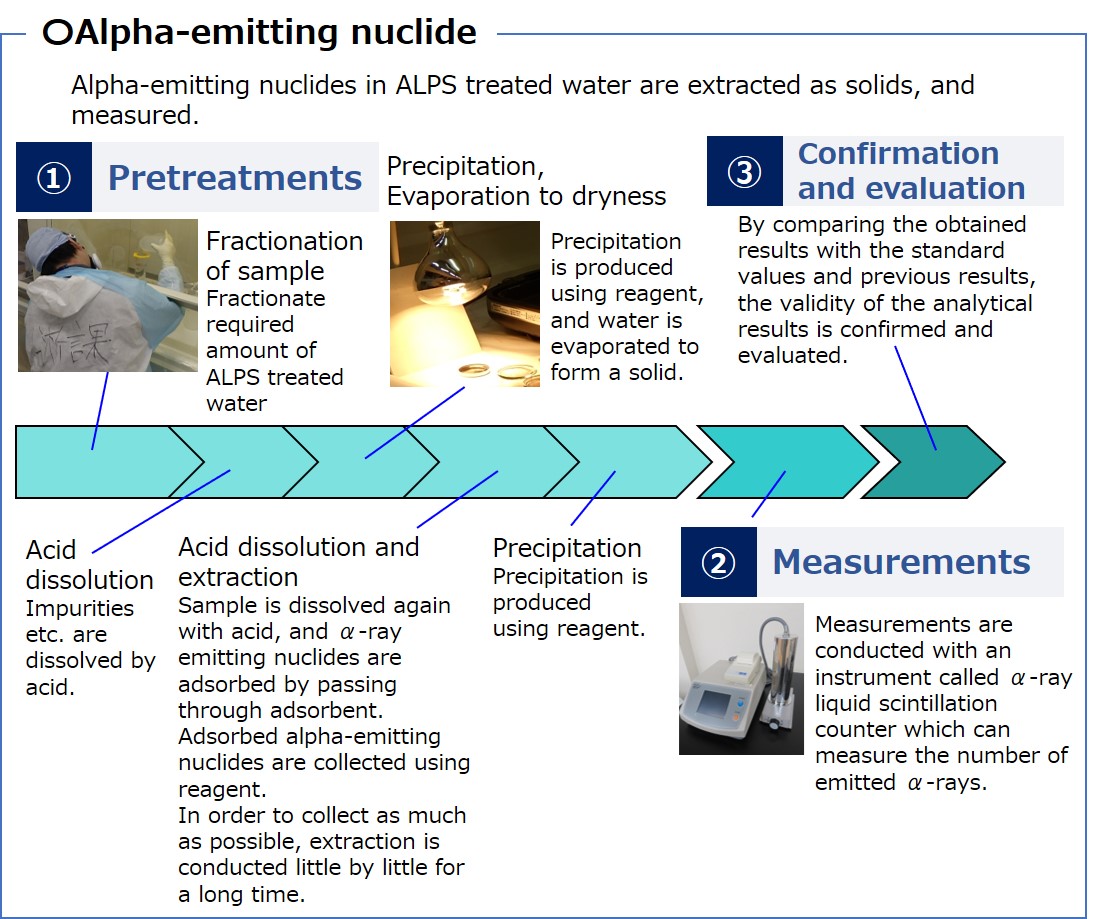
Method for tritium analysis
Confirm tritium activity concentration in ALPS treated water.
After eliminating impurities that interfere the measurement by the pretreatment, tritium concentration in ALPS treated water is measured with liquid scintillation counter that can effectively measure extremely low-energy β-rays emitted from tritium.
This method is based on “No. 9 Tritium Analysis, The Series of Environmental Radioactivity Measuring Methods” regulated by the government as a method to efficiently and correctly analyze radioactive materials in environment.
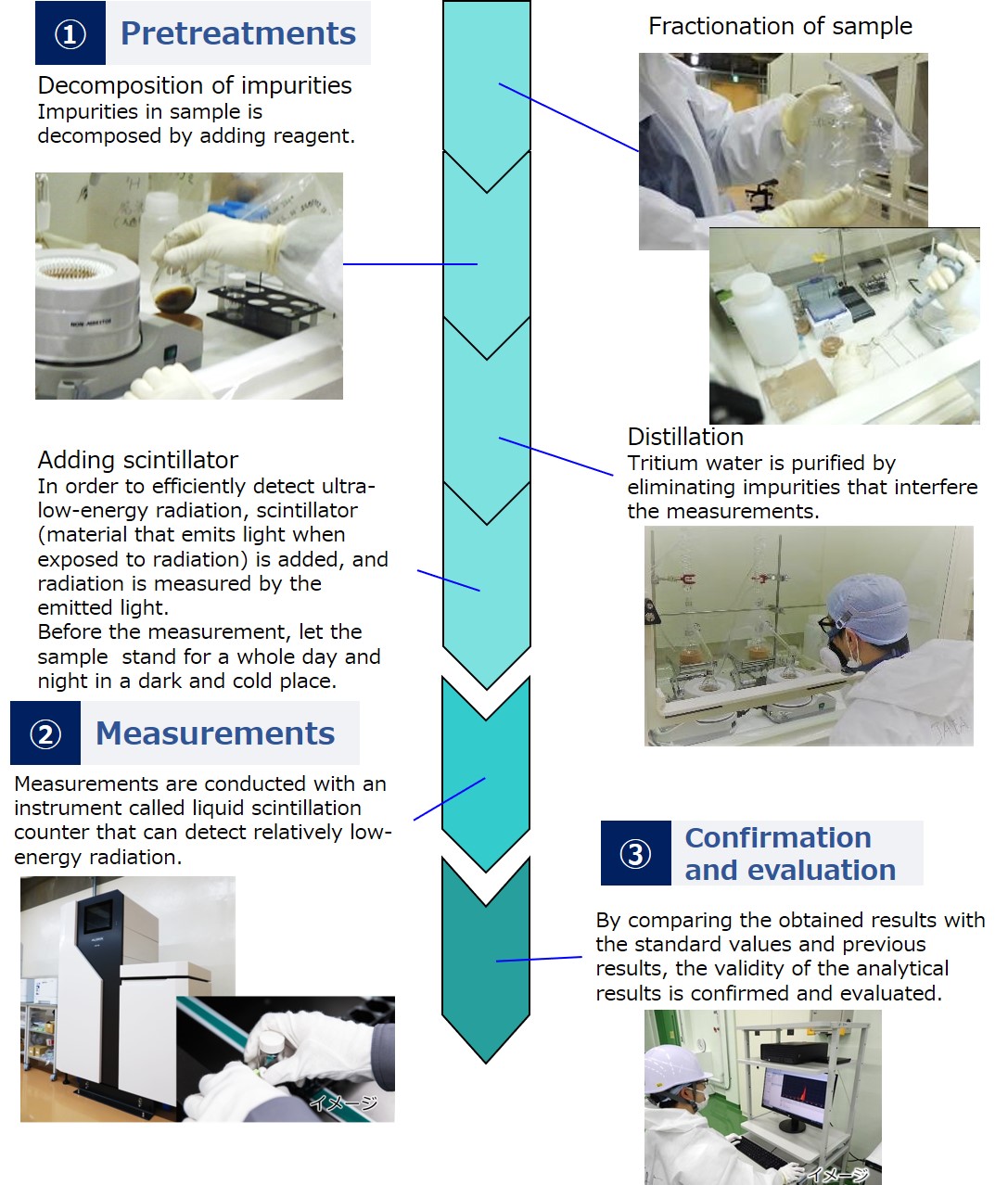
| Glossary |
Regulatory standard value Regulatory concentration limit, Sum of the ratios to regulatory concentrations limits The Series of Environmental Radioactivity Measuring Methods